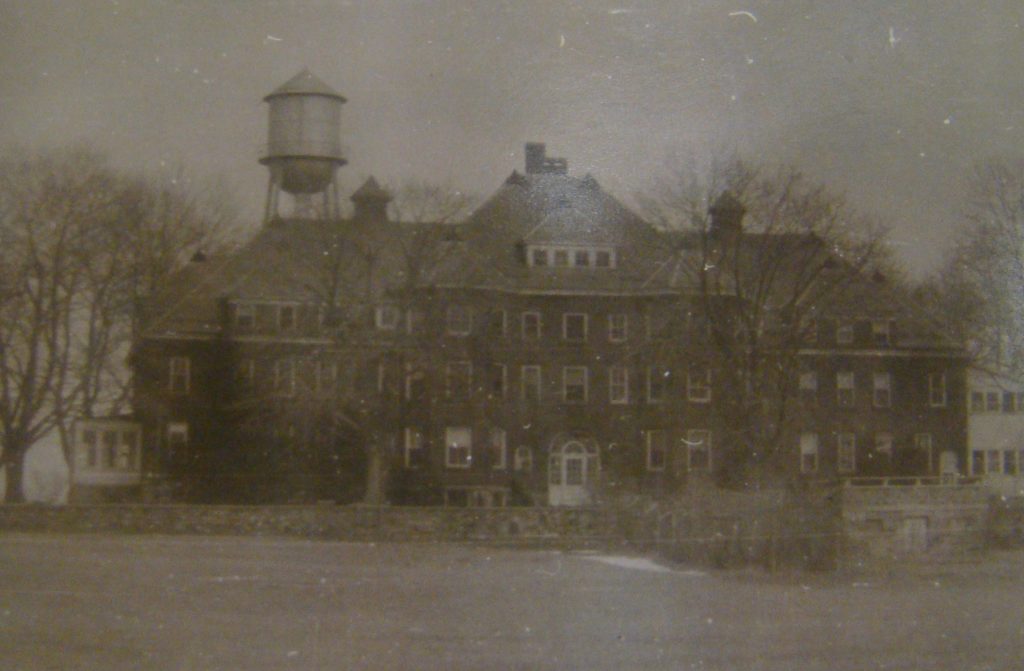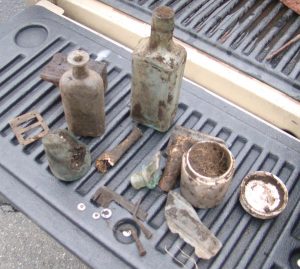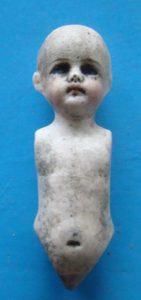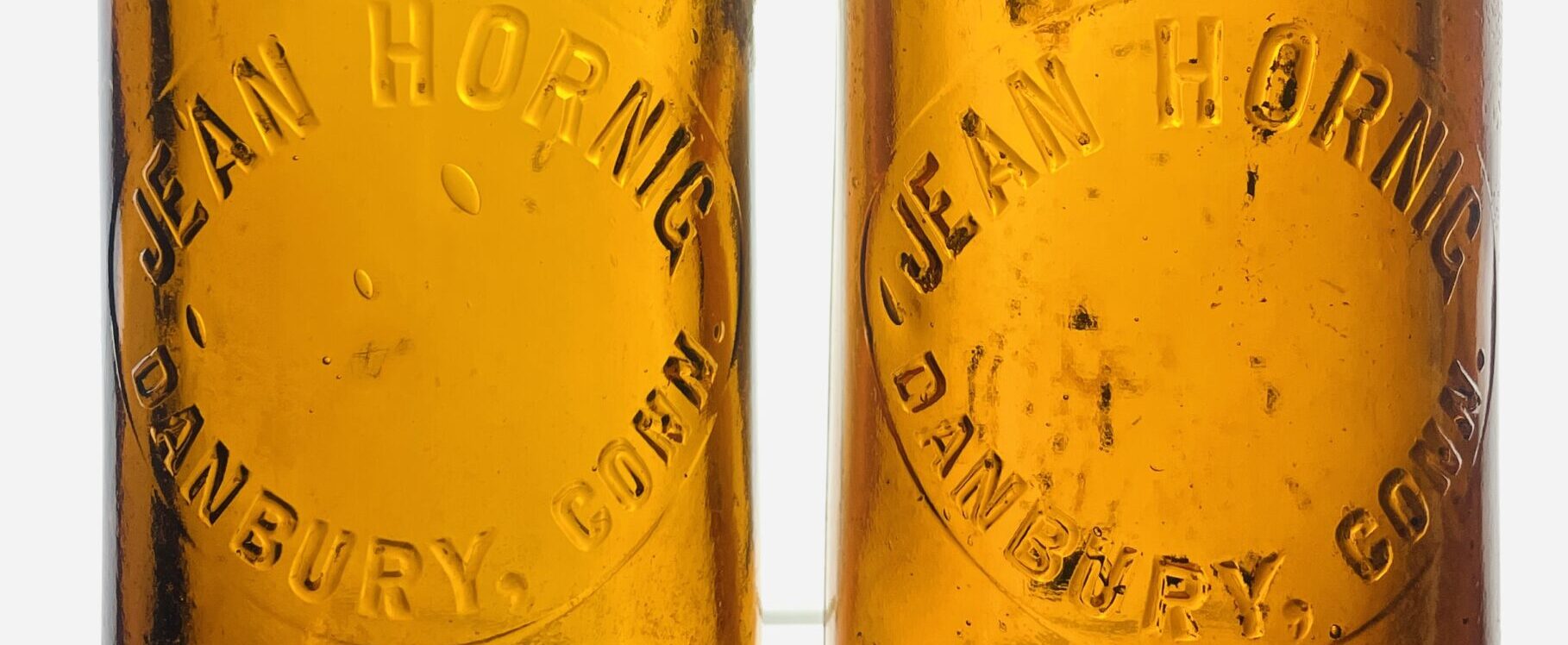
![]() Down on the farm. Artifacts recovered near Broadview Middle School shed light on life at Danbury’s “Old Town Farm.”
Down on the farm. Artifacts recovered near Broadview Middle School shed light on life at Danbury’s “Old Town Farm.”
Editor’s note:
Gladys B. Hammond, a WestConn student, extensively researched Broadview Farm, as it was officially known, for a paper she wrote in the early 1960s. Without her invaluable work, this story would not have been possible. Thanks, Gladys wherever you are…
“We were afraid of it,” remembers one Danburian who grew up near Danbury’s poorhouse or Town Farm as it was known locally “Kids would run by it. We were afraid of it but we didn’t know why.” Alone on a hill overlooking Danbury for over 60 years, the Broadview Farm was a foreboding place straight out of an eerie late-night movie or child’s nightmare. In the fall fields of dead corn and a waxing harvest moon above lifeless trees just added to the sinisterness of the place. Not every child was afraid of the Town Farm, however, but after speaking with a few seniors citizens at the Danbury Senior Center the other day the consensus was unanimous: the old building did carry a stigma. Whether it was always thought of as woeful is uncertain but like other buildings of its kind in Connecticut and around the country it was, for years, the last refuge for the homeless and disabled. Danbury’s Town Farm can trace its roots to Danbury’s Almshouse which was located where Danbury Hospital’s Medical Arts building is today. A hundred-plus years ago the Medical Arts site and all the land on the hill above which includes Broadview Middle School- about 100 acres in total- was Town Farm property. The Almshouse served the community for years but after decades of use and neglect the Almshouse needed to be replaced. Eventually, a plan was put in motion to build a new poorhouse. Designed by Warren R. Briggs of Bridgeport and built by Foster Brothers of Danbury the brick and stone Broadview Farm took only two years to build but when it opened its doors in 1894 the completed building had not cost $30,000 as projected but $75,000. The structure was three stories, a hospital, separate rooms for men and women, several lavatories, rec room and “Colored Department” for African Americans. Oddly Broadview had a jail as well as latticework bars covering windows, likewise, persons who resided at Broadview were called inmates all in spite of poverty and disability not being a crime. Although Broadview would be labeled a prison for the poor by some today, by late 19th century standards Broadview was considered quite progressive. In fact, the farm was cited numerous times as a model, “for efficiency,” when inspected by the state. However, from the start, the building was a financial burden for the city of Danbury. In 1894 when Broadview opened expenses were $6,213.80 a year by 1962 when the farm officially closed the cost of running Broadview had increased to $38,661. Despite the cost difficulties, the poorhouse remained operational for over 60 years. Regardless of cost senior citizens who recall Broadview remember the facility carried a social stigma, as well, that one senior citizen I interviewed described as a “veil” which hung around the place. Local kids were afraid of the large building that sat alone on a windswept hill above Danbury, children who lived at the farm were teased and students who were performing poorly in school were warned by their teachers if they didn’t straighten out they’d end up at the poorhouse. Despite the negative mood produced by the building, Broadview was an integral part of the community for years. Seniors I spoke with remember poorhouse residents selling vegetables at the Danbury Fair for instance. Similarly, Broadview residents operated a fruit stand by the farm. Broadview remained a landmark in Danbury for years but by the 1950s it had become outdated and by 1962 the city closed the facility. The money issues that had haunted Broadview for years were its final undoing- the building needed renovating but the city was unwilling to allocate money for the project. In addition, Danbury needed more school space, so after sixty years of providing shelter for the cities’ needy, Broadview Farm was demolished. But that’s not the end of the story.
REDISCOVERY
Fifty years after Broadview Farm was razed Hat City Diggers set out exploring the property. And although Broadview Farm is long forgotten, in April of 2017 it came to life again. Early spring explorations were far from fruitless and we made our first discovery without delay. Near an embankment along the edge of the property, we found surface trash which had been discarded over one hundred years ago. Then in May after a second examination of the area, we located a second trash dump as well as a foundation just yards from the middle school’s Steve Kaplanis football field. The ruins are overgrown like some ancient Cambodian temple but are certainly associated with Broadview Farm. Straightaway we began excavating the first Broadview dump. This dig produced an abundance of artifacts and some these relics recovered could have only belonged to children. Discovered were clay marbles, a child’s spoon and a small bisque doll. This was exceptional because records for 1896-1900 show that only two children lived at the farm ages 1-4 and 5-14. The discovery of the toys, which appear to be from the right time frame, suggests they may have been played with by these children during their stay at the farm. We are uncertain why the toys were discarded but one possible explanation is suggested by data Gladys Hammond collected. This information indicates for the period after the children were discharged no other children were admitted. Toys weren’t all we recovered. The use of patent medicines to treat illnesses flourished at Broadview and we found close to a dozen of these nostrum bottles on the property ranging from the common Dr. J. Hostetter’s Stomach Bitters to the somewhat scarce Dr. Miles New Heart Cure. Considering the economic limitations of the residents, more than likely, the medicines were provided by staff. Equally important as the toys and medicines are several bones from chickens and pigs we uncovered and dozens of square-cut nails. The Town Farm was not only a sanctuary for Danbury’s poor and disabled but the site was also a working farm. During my interview with local senior citizens, I learned animals such as cows, pigs and chickens lived at the farm as late as the 1950s. The bones we uncovered are much older, more than likely, from the turn of the century and they suggest individuals were eating hearty meals containing protein. The nails we found are another story, They indicate renovations happened at Broadview a few years after it open. Interestingly the dump also contained liquor flasks and at least one Michael McPhelemy beer bottle compelling evidence some unspecified person or persons had tipped the bottle at the supposedly dry Town Farm. Finally, the artifacts we discovered are only a microcosm of life at Broadview Farm. Merely a snapshot of day to day happenings: children at play, someone taking the edge off, workmen repairing a floor, etc. These finds though not exceptional (every dump in Danbury contains at least one of these items), nevertheless, appear to be some of the first artifacts ever recovered from the site after it closed over fifty years ago and this trash tells us the following- the haves were not any different than the have nots- making it critical to understanding life down on the farm.

These artifacts (pictured above) were recovered in April from the Broadview Farm site: a comb, several hand-forged nails, patent medicine bottles, bones and a cone ink. Today the site is home to Broadview Middle School.

Porcelain buttons, clay marbles and two pipes are a few artifacts from the dozens collected at the Broadview Farm site. The pipe (bottom) is charred after being exposed to a fire.

Recovered from the site in April is this creepy bisque doll that looks a lot like a cadaver. Note paint is still present on the face.

Hidden by woods today, remains of Broadview Farm lie forgotten yards from Broadview Middle School’s Steve Kaplanis football field.
